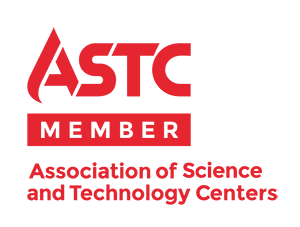SCIENCE EXPERIMENTS FOR KIDS
HOW TO MAKE A CITIZEN SCIENCE NATURE MAP
This experiment proves that trash-talking and cell phones aren't always bad for your kids


Tested, edited & approved by:
Róisín Altreuter,
Science Educator & Sustainability Coordinator
This animal is not on exhibit in the habitats. It is one of our Animal Ambassadors and is used in public and school programs.
Have a bash picking up trash with this citizen science family conservation activity! Your child can join an international citizen science effort to understand the kinds of litter and how it's distributed in our communities.
Collect litter near where you live and use an app to see your impact add up as the data is automatically plotted on a map. Encourage your child to think creatively about how your family can help prevent litter in your area!
Heads up: CuriOdyssey usually steers away from putting a child's nose in a phone, but in this case the mobile app is a valuable tool to help visualize and understand data in the real world. Plus, it helps get kids outside and participating in a citizen science project!
GATHER THIS:
- A phone with the Litterati mobile app installed. Download the app from Apple App Store or Google Play
- Gloves (reusable and washable gardening or dish gloves work great!)
- A trash bucket or trash bag
THEN DO THIS:
- Download the Litterati mobile app, sign up, and have your child play around with it.
- Go for a walk near where you live with your child. Encourage them to slow down and notice even small pieces of litter that are easily overlooked.
- When you find a piece of litter, open the Litterati mobile app and help your child take a picture of the litter and tag it with the words that describe it (like "plastic" and/or "fruit sticker" and/or a brand like "taco bell").
- Use a gloved hand to pick it up. Do not pick up anything sharp (like broken glass) or anything that could be a biohazard (like a tissue).
- When you get home, go to https://map.litterati.org/globalmap/, ideally on a computer. Zoom in on where you were collecting litter to see your data displayed on the map. Play around with it and notice your impact and trends!
ASK THIS:
- What do you notice?
- Are there any areas that were litter hot spots? Why might there be more litter in that area? How could we prevent litter in that area?
- What were the most common things you found? Why might there be a lot of that kind? How could we prevent that kind of litter?
- What are some good things about preventing and cleaning up litter? How might the litter you found impact animals and people in your community?
- What can our family do to help prevent litter?
WHAT IS HAPPENING?
Citizen science is scientific research completed with support from volunteer non-professional scientists — which can include you! Collecting and mapping data about the most commonly found litter in your community is a great way to identify steps that can be taken to reduce the amount of trash that ends up as litter. It is also a fantastic way to empower your young learner! They have the ability to consider real-world opportunities for positive impact by noticing what is commonly found and coming up with creative solutions.
WHAT THIS TEACHES:
Skills: Observation, analyzing data, designing solutions
Themes: Conservation, citizen science maps, backyard biology
Join the CuriOdyssey Community
LOCATION
1651 Coyote Point Drive
San Mateo, CA 94401
Ohlone Land Acknowledgement
650-342-7755
info@curiodyssey.org
CuriOdyssey is a 501(c)(3) non-profit, Tax ID 94-1262434


